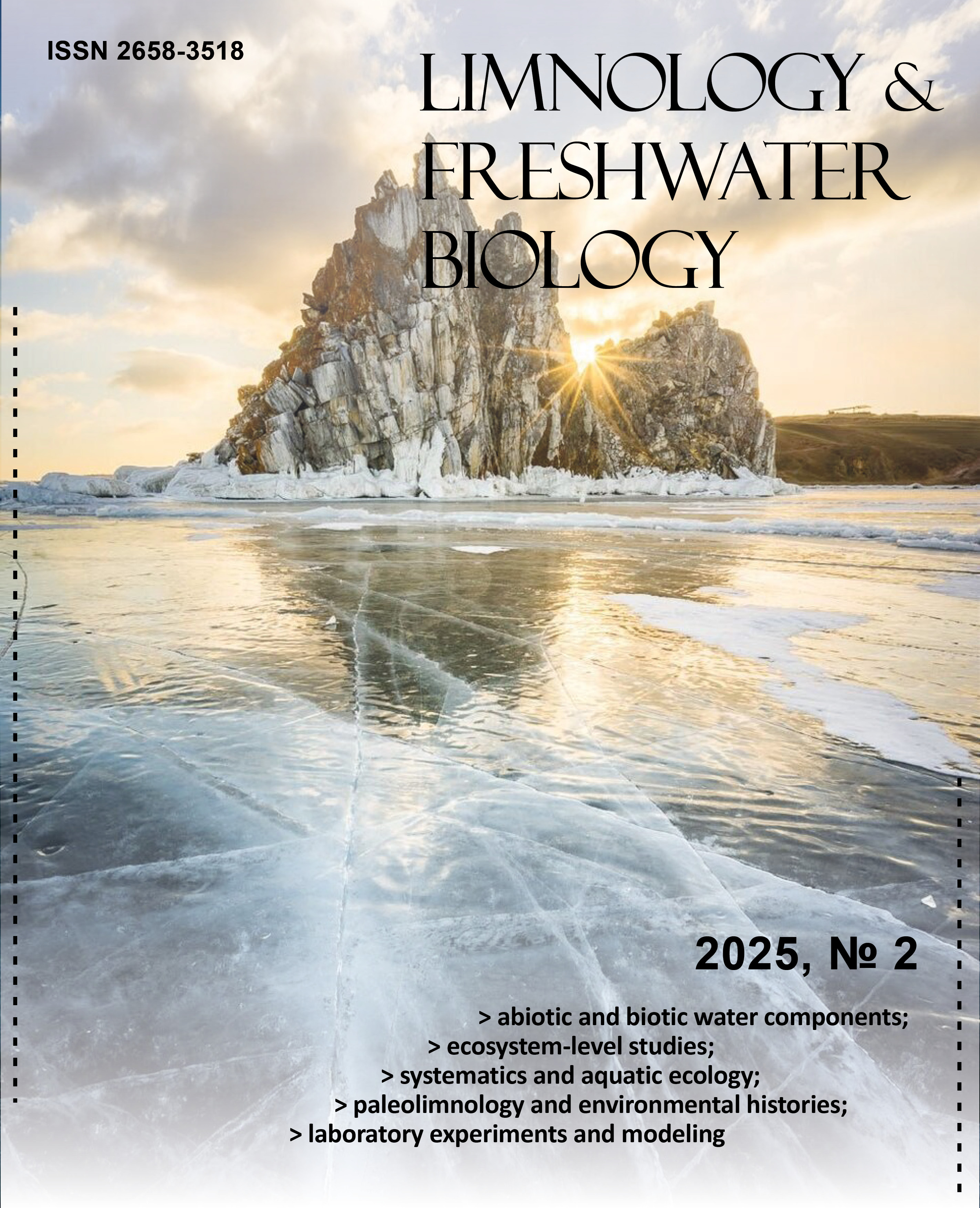Scanning microscopy of the oral appendages of Epischura baikalensis females (Copepoda,Calanoida)
DOI:
https://doi.org/10.31951/2658-3518-2025-A-2-205Keywords:
copepoda, feeding mechanism, labral glands, mouthpart, SEMAbstract
To date, there are difficulties in understanding the mechanism of capture of small particles, such as picoplankton, by representatives of Copepoda during feeding. In this regard, the morphology of oral appendages in Epischura baikalensis Sars 1900 (Copepoda, Calanoida) was studied using scanning electron microscopy (SEM). We obtained using scanning electron microscopy (SEM) some photographs of the mouth area of the endemic crustacean from Lake Baikal. Lobes of the labrum and labium, densely pubescent with long setae were described. The labrum and labium form a chamber around the esophagus, into which some pores open. It is assumed that through these pores, digestive enzymes are released into the oral cavity, contributing to the formation of a food lump. The article describes the peculiarities of the method of obtaining SEM preparations of E. baikalensis and discusses the role of the morphology of all oral appendages in the capture of food particles, including objects 1-4 μm in size.
Downloads
Published
Issue
Section
License
Copyright (c) 2025 Limnology and Freshwater Biology

This work is licensed under a Creative Commons Attribution-NonCommercial 4.0 International License.

This work is distributed under the Creative Commons Attribution-NonCommercial 4.0 International License.







